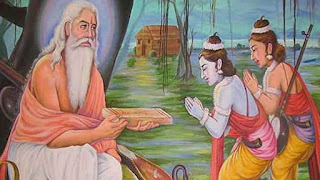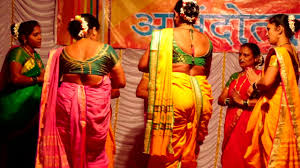Maharishi Valmiki Jayanti -The sage who authored Ramayana
The birth anniversary of Maharishi Valmiki, the author of the famous Hindu epic Ramayana, is celebrated annually as the festival of Valmiki Jayanti. He is known for writing the epic. It occurs on the day of the full moon in the month of Ashwin, which on the Gregorian calendar falls somewhere between the months of September and October. The Hindu calendar specifies this day. In some circles, it is also known as Pragat Diwas. It is well documented that Maharishi Valmiki and Lord Rama lived during the same era and that Lord Rama paid a visit to Maharishi Valmiki's ashram while he was in exile. In addition to this, he gave shelter to Sita after King Rama had banished her from the kingdom of Ayodhya. He did this by rescuing her. Her labour and delivery took place in his ashram, and she gave birth to twins named Lava and Kusha. The great sage became their teacher when they were young and instructed them in the Ramayana, which is comprised of 24,000 verses (known as shlokas) and seven cantos (Kandas).
who is Maharishi Valmiki?
There are a few versions of what happened in his youth, according to the various accounts. One of these is that he was originally known as Agni Sharma and later became known as Valmiki. He was born into a Brahmin family whose name was Pracheta which belonged to the Bhrigu gotra (also known as Sumali).
Another prevalent theory holds that in his younger years, Valmiki lived a life of crime as a motorway robber. Before he met Narad Muni, he had a history of robbing and murdering people. After meeting Narad Muni, however, he changed his ways and became an ardent follower of Lord Rama. When he had been practicing meditation for a considerable amount of time, a holy voice congratulated him on his successful penance and gave him the name Valmiki.
Another version claims that before Valmiki became a rishi, he lived a life as a thief. This one has been passed down from generation to generation. It is mentioned in the Nagara Khanda of the Skanda Purana, in the section on the origin of Mukhara Tirtha, that Valmiki was born as a Brahmin with the name of Lohajangha, and that he was a loving son to his parents. This information may be found in the section on the origin of Mukhara Tirtha. He was completely devoted to his lovely wife, and the two of them never cheated on each other. Once upon a time, there was a drought in the region of Anarta that lasted for twelve long years. In order to provide for his starving family during this time, Lohajangha began robbing people whom he met in the forest. Throughout the course of their lives, he came across the seven wise men, also known as the Saptarishi, and attempted to steal from them as well. But, the wise elders had compassion for him and attempted to show him the error of his ways. The Brahmin-turned-thief became so involved in the repetition of the mantra that ant hills began to grow around his body. The mantra had been given to him by Pulaha, another of the assailants. When the sages returned and heard the sound of the mantra emanating from the anthill, they bestowed their blessings upon him and said, "Because you accomplished great Siddhi while seated within a Valmiki (an anthill), you will become well-known throughout the world as Valmiki."
One day, while performing his ritual cleansing ablutions in the Ganges River, Valmiki was there. One of his disciples, named Bharadwaja, was in charge of transporting his garments. They came upon the Tamasa river while they were travelling. While Valmiki was observing the river, his pupil heard him say, "Look at how transparent this water is; it reminds me of the thinking of a trustworthy person. I am going to take a shower here today." While he was seeking a good spot to step into the river stream, he came across a crane couple who were engaged in mating behaviour. After observing the joyful birds, Valmiki had a surge of happiness. An arrow struck a male crane bird, and it perished instantly there on the ground. Its partner, overcome with grief, wailed in agony before succumbing to the effects of shock. As Valmiki saw how helpless the child was, his heart began to break. He scanned his surroundings in an attempt to identify the person who had shot the bird. Nearby, he noticed a hunter armed with a bow and some arrows. Valmiki became quite enraged. His mouth parted, and he let forth a piercing scream:
You will find no rest for the long years of Eternity
For you killed a bird in love and unsuspecting
This shloka, which is considered to be the first in all of Sanskrit literature, is said to have emerged spontaneously from Valmiki's anger and anguish. Later on, Valmiki composed the entirety of the Ramayana in the same metre that the shloka had originated from, receiving blessings from Lord Brahma as he did so. As a result, this shloka is honoured in Hindu literature as the very first shloka ever written. It is believed that Valmiki was the first poet, also known as Adi Kavi and that the Ramayana was the first Kavya. His compositions, particularly the great epic, continue to be repeated to this day by adherents of the Hindu religion. It is not known when exactly Valmiki was born, however, it is assumed that he lived about the year 500 B.C.
Northern India is where the festival of Valmiki Jayanti is held, and members of the Hindu religion make it a point to participate in the festivities. People celebrate this day by taking part in large processions known as Shobha Yatras and parading representations of a priest clothed in saffron-colored robes and holding a plume and paper in his hands through the streets of the Valmiki area to the tune of solemn singing. The shrines dedicated to the wise man are decked out with flowers and lit candles, and the worshippers there give away free food and utter prayers.
The most important temple dedicated to Maharshi Valmiki can be found in the neighbourhood of Thiruvanmiyur in Chennai. It is claimed that the Sage Valmiki was born in the neighbourhood of Chennai known as Tiruvanmiyur, which derives its name from the Tamil phrase "Thiru-Valmiki-Oorr." There is also a temple in this area that was constructed 1,300 years ago. It is also said that the Rishi Valmiki came to this place to relax after writing the Ramayana. In later years, the temple was erected and dedicated in his honour. The Brahmotsavam festival is held each year in March of the calendar year. When the moon is full on the first night of each month, special prayers are held. Temple Marundeeswarar oversees temple Maharshi Valmiki. There is another Shree Valmiki Mata Maha Samsthana at Rajanahalli, Karnataka. We are able to visit temples and samsthanas that are very similar to these in other parts of India.
This article is also available in Indian Temples -Discover. Temples of India bi-Monthly magazine Oct-Nov 2020 edition.















Comments
SSB Interview Preparation | SSB Interview Preparation | NDA Coaching Centre | Senaabhyas Education Centre | Best Defence Coaching in Agra | Amish Das | NDA SSB Interview
also read this - GAPS SSB. Best Nda Coaching in Delhi